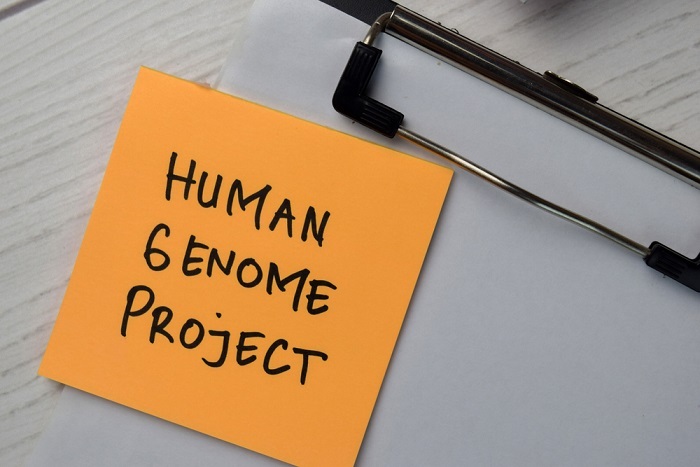
 Data Structure
Data Structure Networking
Networking RDBMS
RDBMS Operating System
Operating System Java
Java MS Excel
MS Excel iOS
iOS HTML
HTML CSS
CSS Android
Android Python
Python C Programming
C Programming C++
C++ C#
C# MongoDB
MongoDB MySQL
MySQL Javascript
Javascript PHP
PHP
- Selected Reading
- UPSC IAS Exams Notes
- Developer's Best Practices
- Questions and Answers
- Effective Resume Writing
- HR Interview Questions
- Computer Glossary
- Who is Who
Human Genome Project Goals Significance
Introduction
The project began in 1990 and was completed in 2003, costing approximately $3.8 billion and involving hundreds of scientists worldwide.
The HGP was a collaborative effort between the United States, United Kingdom, Japan, France, Germany, China, and Russia. Its goal was to develop tools that would allow for medical advances to be made based on genetic information and research on human health and disease.
It also sought to identify the sequence of all human genes, which is estimated at 20,000-25,000 genes; determine the complete sequence of an individual's genome, determine the complete sequence of many different individuals' genomes, and identify the location and function of all human genes, identify all variations in chromosomes within humans; provide a partial list of variations between species, create a database for storing this information for future use, design new drugs and therapies for curing disease in humans, discover links between genetics and diseases such as cancer or mental disorders like schizophrenia, learn how to control genes to prevent certain diseases from occurring, advance technology such as understanding DNA sequencing and its uses.
Human genome project goals
The human genome project was completed in 2003 and had four main goals?
To read and decode one percent of the genome
To sequence at least 90% of the protein-coding genes in the human genome
To identify and map at least 10% of all human genes
To understand how the information encoded in DNA is converted into proteins.
Methods of the human genome project
The Human Genome Project is a global scientific endeavor aimed at understanding and mapping our minds. It was started in 1990, and the project is anticipated to be completed in 2005.
The Human Genome Project has three phases? 1) sequencing, 2) analysis and 3) technology development. The sequencing phase aims to assess all three billion base pairs in the human genome. The analysis stage involves the interpretation of data produced by the sequencing phase. The technology stage involves the development of bioinformatics and DNA chip technologies to aid in the analysis process.
The process of the human genome project
With the advancement of technology, it has now become possible to fully understand the human genome. Researchers on "the project," or Human Genome Project, sought to determine the DNA sequence of human and other creatures' chemical building blocks. All the information necessary to construct and maintain an organism can be found in the cell's DNA code. DNA is split into units called genes, and each gene is a sequence of proteins that tells the cells how to make proteins.

Scientists hope to uncover cures for many diseases and other ailments by studying genes and proteins. Although it took 13 years and $3 billion dollars to complete, the project has already discovered many important things about human genetics.
Features
Identifying all human genes (sequencing) and determining their functions
Determining the order of bases in the DNA strand
Discovering the sequences in which genes are found on chromosomes.
The human genome is composed of twenty-three pairs of chromosomes. Each chromosome contains thousands of genes that are responsible for the production of proteins. Genes are essentially the blueprints for our bodies, and they determine everything from hair color to blood type to our risk for developing certain diseases.
The human genome project was one step closer to understanding how genetics work on a molecular level, which could potentially lead to new treatments/treatments for genetic diseases such as Alzheimer's, Parkinson's, diabetes, and cancer. It also helps us better understand how humans came into being in the first place and why they look and act (and get sick) the way they do.
Applications of HGP
The human genome project is a massive undertaking with numerous global benefits. Understanding the function of our DNA will allow researchers to develop new treatments for genetic diseases, create designer drugs that target specific ailments, and possibly even unlock the secrets of longevity. However, many people mistakenly believe that understanding DNA is the same as understanding life itself. In reality, it is only one small step on the long road to truly understanding life.
Results
Most people agree that the results of the Human Genome Project have been a success. Researchers deciphered the entire human genome and made it available to be used for scientific, medical, and business purposes.
The project has helped researchers understand how genetic mutations lead to certain diseases and has made it easier for scientists to develop new ways of preventing those mutations from occurring in the first place. While many experts believed that the project would lead to new treatments, cures, and preventative measures within a few years, others argued that the effects would take much longer to become apparent?if they ever did at all.
Though there is still much more work to be done, it is clear that the Human Genome Project has provided invaluable information about our genetic makeup and presents healthcare professionals with potential opportunities to prevent or treat diseases such as cancer, heart disease, and diabetes. Thanks to this project, millions of people have benefited from its findings.

Conclusion
The Human Genome Project was a large, expensive undertaking with the goals of mapping and sequencing the human genome. The project was completed in 2003, and the results have been used in a variety of ways to improve human health. The project has also helped researchers to better understand the biology of a variety of diseases.
FAQs
1. What is the Human Genome Project?
Ans: It was the goal of the Human Genome Project, a multinational endeavor to discover the sequence of chemical base pairs that make up human DNA. Work on the project started in 1990 and was completed in 2003.
2. What does "sequencing" mean?
Ans: Sequencing is the process of determining the order of nucleotides in a strand of DNA or RNA (ribonucleic acid). A single strand of DNA is made up of two chains, called polynucleotide chains, and each chain contains one strand of deoxyribose (DNA) or ribose (RNA).
Each nucleotide has three components? a phosphate group, a pentose sugar (either deoxyribose or ribose), and one of four bases? adenine (A), guanine (G), cytosine (C), or thymine (T). Phosphate and pentose sugars are always present in equal numbers. The four bases are present in different amounts. For example, one chain may have 20 A's but only 10 C's.
3. What are the benefits of knowing our DNA?
Ans: The Human Genome Project has yielded many benefits, including?
New ways to diagnose diseases such as cancer and Alzheimer's disease
New treatments for diseases like cancer, heart disease, diabetes, and other illnesses
Better ways to predict people's response to drugs like antibiotics and chemotherapy.
4. What are the benefits of sequencing an organism's genome?
Ans: Sequencing an organism's genome provides valuable insights into its genetic structure, function, and evolution, the knowledge that can be used to develop new treatments for disease and improve our understanding of biology in general. For example, human geneticists have already identified more than 1,000 disease-related genes based on their association with human diseases or traits such as height or earwax consistency/color.

